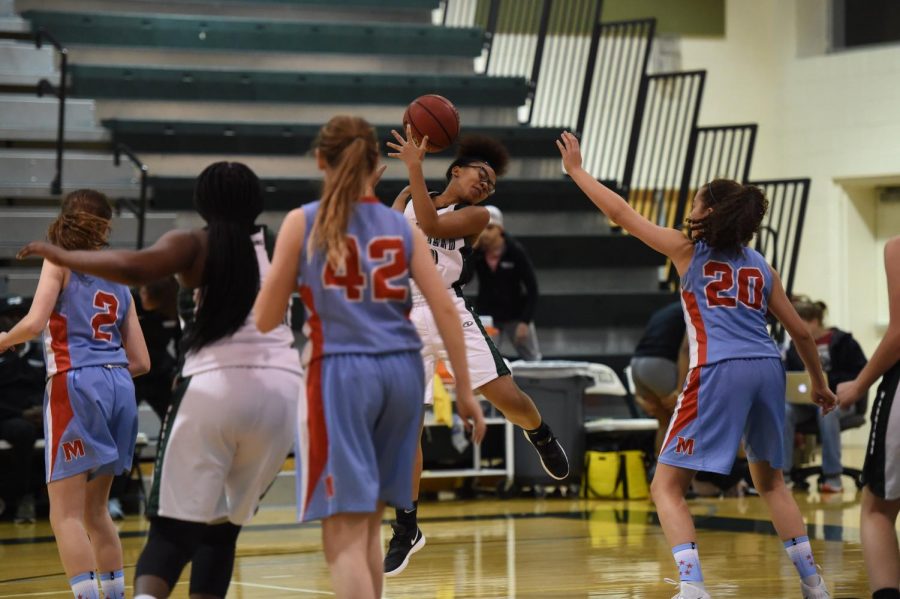Don’t Play Through the Pain: Soreness vs. Injury
#22 Nadia (on last year’s Girls Freshman Basketball team) played hard and avoided an injury on the court. She continues as an athlete this year and is cheering.
“No pain, no gain.” Every athlete has probably heard those words at some point or another. In some ways, it’s true, exercise, particularly heavy exercise, can be painful both mentally and physically. But when does “playing through the pain” become dangerous?
Ms. Kigin, our athletic trainer, said that it is important students know the difference between soreness and injury. If someone did a full workout the day before and the muscles in their legs are sore, it can feel very painful and uncomfortable. However, that is not an injury. By exercising and using the muscles the next day, the soreness will fade. In terms of actual injuries she said, “I can’t help kids who don’t come see me. For every injury, we can work with a child to get them back to where they need to be, whether it be a concussion, torn ACL, etc.”
Many athletes may feel pressure to conceal injuries, hide their severity, or cut short the physical healing process to return to their sport. This can aggravate injuries even further, adding to severe and sometimes lasting damage.
Athletes have a choice. Here at Wakefield, our coaches are committed to the safety of the players. If a player is injured, or shows signs of an injury, they are immediately removed from play until they are cleared by a doctor. While a player is out for an injury, they can still participate in practices depending on the location and severity of their injury. Now that we’re in basketball season, a student with a sprained ankle can still practice shooting or dribbling, but can’t take part in a scrimmage until they’re healed.
Injuries you should NEVER play through.
Concussions – Concussions can be caused by a blow to the head. They are a mild traumatic brain injury, and if treated correctly, recovery is easy and mostly quick. However, if you return to a sport before you’ve fully healed, you can cause long term brain damage.
Fractures – Fractures are broken bones and require immediate medical attention. If you have a broken bone, chances are you won’t be able to do anything without extreme pain, but concealing the pain to continue playing will only make the injury worse.
Torn Ligaments – Tears in muscles or ligaments are hard to repair and can get much more severe if you put them under strain before they’re fully healed. These can sometimes be the most frustrating injuries because they seem to get better but can become aggravated very easily.
For a more comprehensive list of injuries, long and short term effects, and treatment, check out this article at healthline.com
Many athletes may feel pressure to return to a sport, or become bored while they’re waiting for the healing process to finish. Quarterback and senior, Cason Poythress said, “I have nothing to do. Now that football season is over, I am so bored.” On top of being painful, injuries also have the potential to cause depression. Sports can be a big part of a student’s life from practices, to team bonding, to being eligible for scholarships to college. There are many layers, and when there is a break in routine, it is easy to become frustrated, anxious, or depressed. If you are dealing with the emotional effects from an injury, read this article from the NCAA about signs, symptoms, and coping mechanisms.
You always have a choice, and there are lots of resources at Wakefield to get you back on your feet and on the field in no time!

Hi my name is Josie and I'm a senior. This is my second year in Journalism and also my second year at Wakefield. I'm a huge dog/cat/pet person, and in...




fitoru • Jan 9, 2020 at 5:15 am
this is fantastic. It is amazing to know about these information.More power